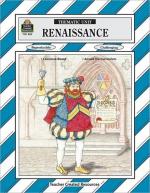|
This section contains 1,554 words (approx. 6 pages at 300 words per page) |

|
Society of Orders. During both the Renaissance and Reformation, people did not usually use wealth or occupation as the main determinants of social stratification. The most common social model, which embodied the underlying assumptions about human nature, was that society was made up of "Orders," or "Estates." These Orders were determined not by wealth, but by social function. People assumed that society was divided into Three Orders: the clergy, the nobility, and the populace. The clergy was the First Estate because its function brought it closest to God. It was responsible for teaching the other two orders about truth and morality. The nobility was considered the Second Estate, even though it held most of the real power in society. Its primary function was to protect the other two orders and ensure that laws were made and enforced. The Third...
|
This section contains 1,554 words (approx. 6 pages at 300 words per page) |

|




